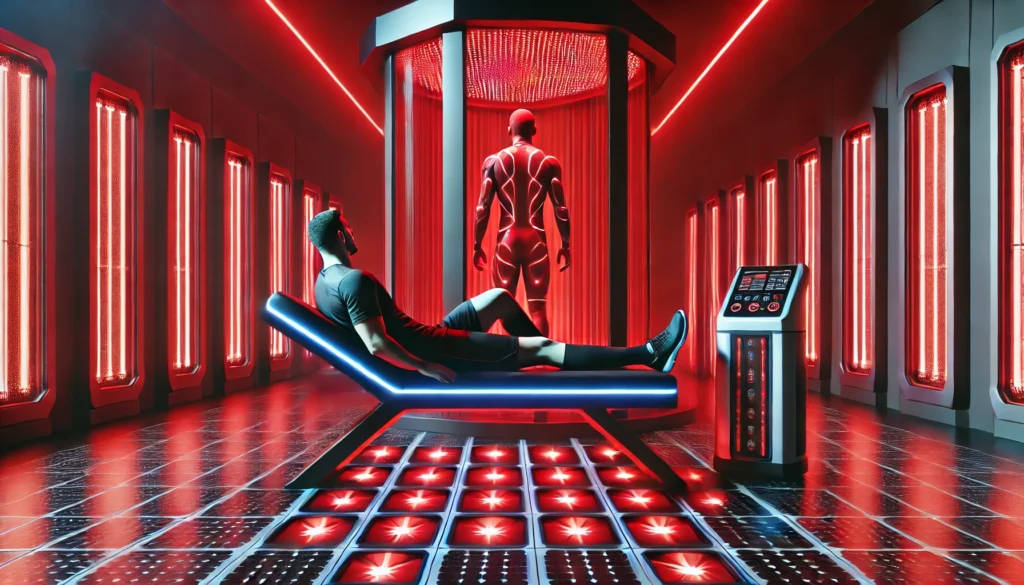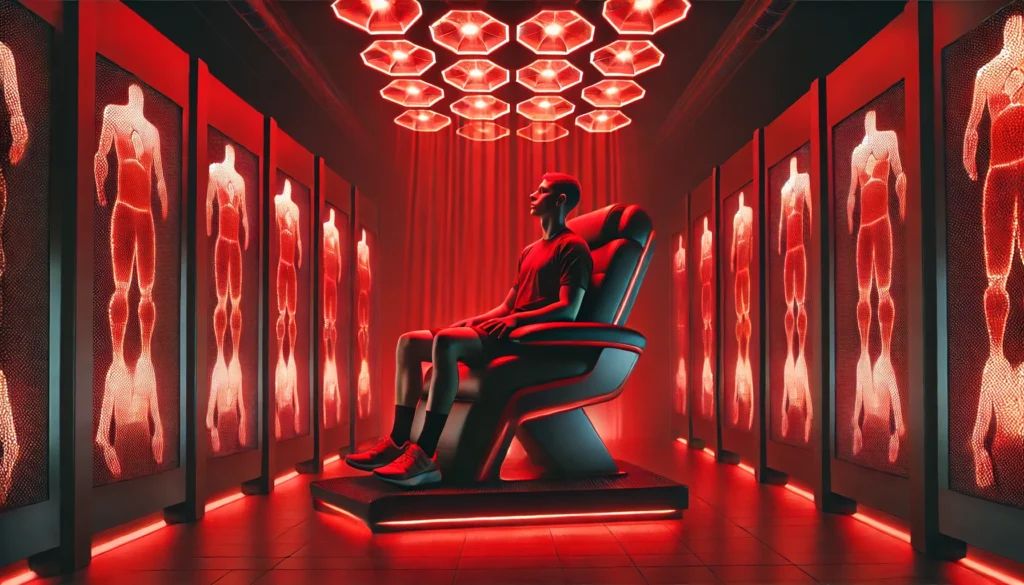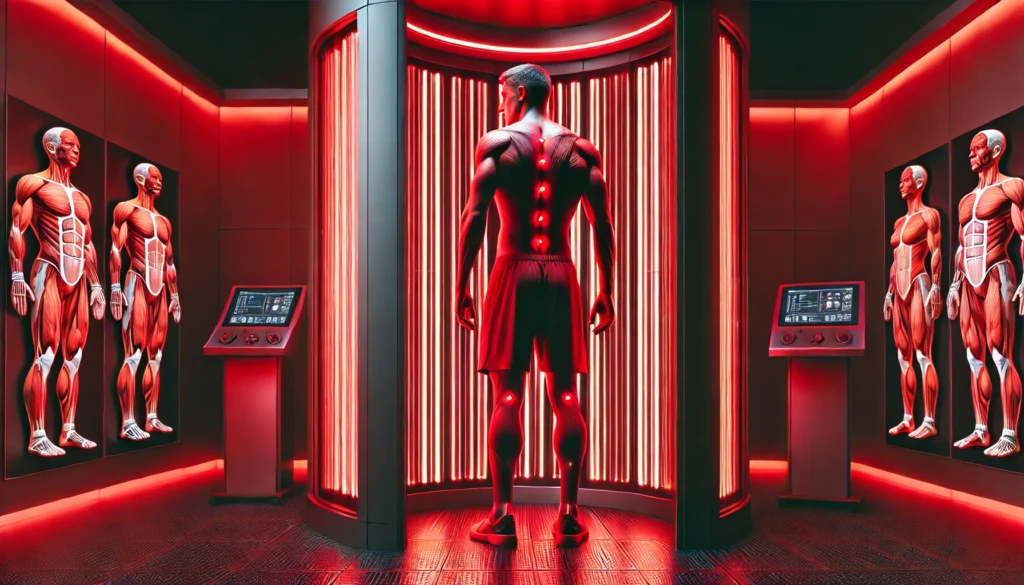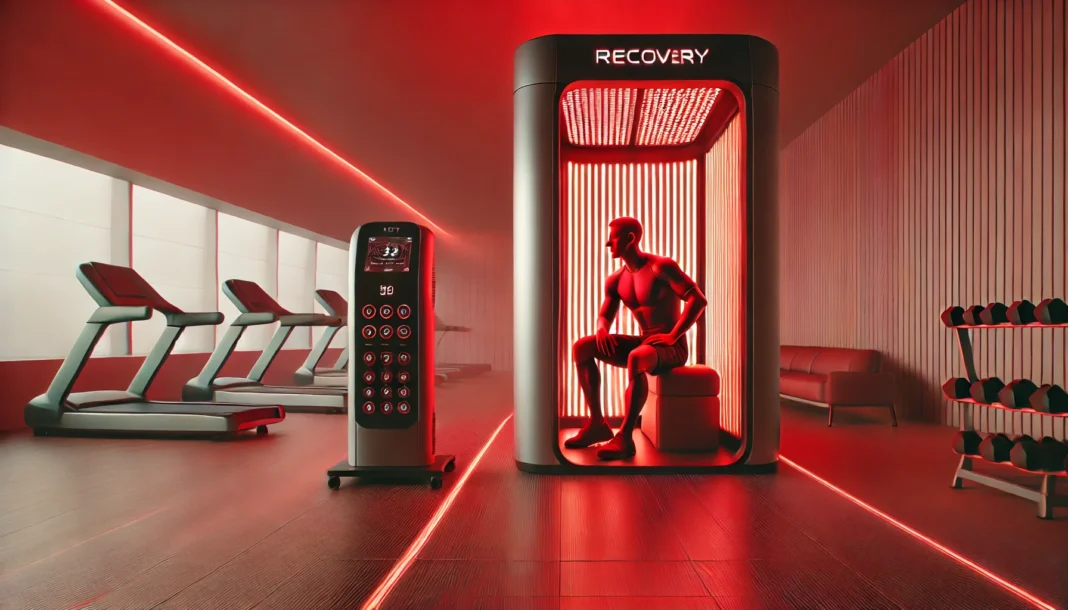Understanding Red Light Therapy and Its Benefits for Athletes
Red light therapy has gained increasing recognition as a powerful tool for promoting athletic recovery and regeneration. By utilizing low-level wavelengths of red and near-infrared light, this non-invasive treatment stimulates cellular repair, reduces inflammation, and enhances blood circulation. Athletes from various disciplines, including endurance sports, strength training, and team sports, have incorporated red light therapy into their recovery protocols to mitigate muscle soreness, improve joint function, and accelerate tissue healing. The growing body of scientific research supporting red light therapy underscores its potential in optimizing athletic performance and longevity.
You may also like: Red Light Therapy for Muscle Recovery: How Athletes Can Speed Healing and Enhance Performance
The fundamental mechanism behind red light therapy lies in its ability to penetrate the skin and interact with mitochondria, the powerhouse of cells. This interaction enhances adenosine triphosphate (ATP) production, which serves as the primary energy currency for cellular function. By increasing ATP synthesis, red light therapy helps cells repair damage more efficiently, thereby expediting the healing process. Additionally, the therapy’s ability to reduce oxidative stress and inflammation makes it an invaluable tool for athletes who subject their bodies to rigorous training and physical exertion.
With its wide-ranging benefits, red light therapy has become a staple in sports medicine and rehabilitation clinics. However, one of the most frequently asked questions by athletes and fitness enthusiasts is: how long should you do red light therapy? Finding the optimal treatment duration is crucial for maximizing benefits while avoiding overuse. In this comprehensive guide, we will explore the recommended treatment times, frequency, and best practices for integrating red light therapy into an athletic recovery routine.
How Long Should You Do Red Light Therapy for Effective Results?
The ideal duration of red light therapy depends on several factors, including the specific condition being treated, the intensity of the light source, and individual responsiveness to the therapy. For general muscle recovery and inflammation reduction, sessions typically range between 10 to 20 minutes per treatment area. This timeframe ensures that the targeted tissues receive an adequate dose of red and near-infrared light to stimulate cellular repair without overstimulating the system.
Research has shown that shorter sessions of around 10 minutes can effectively promote acute muscle recovery, making them ideal for post-workout treatments. Conversely, longer sessions of 15 to 20 minutes may be more suitable for addressing chronic pain, deep tissue injuries, or joint inflammation. It is important to note that exceeding the recommended treatment duration does not necessarily enhance the benefits and, in some cases, may lead to diminishing returns.
Additionally, athletes using handheld or panel-based red light therapy devices should consider the device’s irradiance, or power output, when determining treatment duration. Higher-powered devices may require shorter sessions, while lower-powered options may necessitate slightly longer exposure times. By adhering to manufacturer guidelines and adjusting treatment durations based on individual needs, athletes can optimize their red light therapy experience.
How Often Should You Use Red Light Therapy for Athletic Recovery?
Determining how often you should use red light therapy depends on several factors, including training intensity, recovery goals, and overall health. Most experts recommend using red light therapy between three to five times per week for optimal recovery benefits. This frequency allows for consistent cellular stimulation without overwhelming the body’s natural repair mechanisms.
For athletes undergoing intense training cycles or recovering from injuries, daily sessions may be beneficial in the short term. However, it is essential to monitor how the body responds to frequent treatments. Some individuals may experience diminishing benefits with excessive use, emphasizing the importance of striking a balance between treatment frequency and recovery needs.
Long-term maintenance of red light therapy can be adjusted based on an athlete’s performance schedule. For example, during competition season, more frequent treatments may be warranted, while in off-season or deloading phases, less frequent use may suffice. Ultimately, paying attention to individual recovery responses and adjusting session frequency accordingly will yield the best results.
Can You Use Red Light Therapy Every Day?
A common question among athletes is whether daily use of red light therapy is advisable. The short answer is yes, red light therapy can be used every day, provided that treatment durations are within recommended limits. Since red light therapy is non-invasive and free from harmful ultraviolet (UV) radiation, it does not pose significant risks when used regularly.
That said, individual tolerance to daily treatments may vary. Some athletes may experience enhanced recovery and reduced soreness with daily use, while others may find that slightly less frequent sessions provide similar benefits. The key is to listen to your body and make adjustments based on personal experience and recovery metrics.

How Long Does Red Light Therapy Take to Work?
The time it takes for red light therapy to produce noticeable results varies depending on the specific condition being treated and individual responsiveness. Some athletes report immediate improvements in muscle relaxation and reduced soreness following a single session. However, for more significant benefits, such as enhanced tissue repair and reduced chronic inflammation, consistent use over several weeks is typically required.
Scientific studies indicate that cumulative exposure to red light therapy yields the most profound effects. For example, athletes recovering from muscle strains or joint injuries may experience substantial improvements after two to four weeks of consistent treatments. Likewise, individuals using red light therapy for general muscle recovery and performance enhancement may notice gradual improvements in endurance, flexibility, and overall recovery rates over time.
By maintaining a consistent red light therapy routine, athletes can experience progressive benefits that contribute to long-term performance optimization and injury prevention.
Frequently Asked Questions (FAQ) About Red Light Therapy for Athletic Recovery
1. How long should you do red light therapy for optimal results? The ideal red light therapy treatment time varies depending on the specific goal, body area, and device strength. For muscle recovery, a session typically lasts between 10 and 20 minutes per targeted area. Overexposure does not necessarily accelerate healing and may lead to overstimulation of cellular processes, which can be counterproductive. Research suggests that consistency is more crucial than duration, meaning it’s better to use red light therapy regularly rather than excessively in a single session. Monitoring individual responses, such as improvements in soreness, inflammation reduction, and energy levels, can help tailor the best treatment duration for long-term results.
2. How long does red light therapy take to work for athletic recovery? The effects of red light therapy are cumulative, meaning noticeable improvements may take anywhere from a few sessions to several weeks, depending on the severity of the condition being treated. Some athletes experience immediate benefits, such as reduced muscle tension and increased circulation, after just one session. However, deeper tissue repair, such as tendon recovery or inflammation reduction, often requires consistent application over two to four weeks. Red light therapy supports biological processes rather than forcing immediate changes, so patience and adherence to a treatment schedule are key. The body’s ability to repair at a cellular level also influences how quickly results manifest.
3. How often can you do red light therapy for muscle recovery? Athletes can typically use red light therapy between three to five times per week, with some individuals benefiting from daily treatments. However, long-term daily exposure may not provide additional benefits beyond what a well-planned schedule can achieve. If using red light therapy every day, alternating targeted muscle groups can help avoid overstimulation in one area while maintaining systemic recovery benefits. The therapy should be integrated with other recovery methods, including proper nutrition, hydration, and sleep, to maximize its effectiveness. Periodic adjustments to treatment frequency based on training intensity and recovery feedback ensure optimal results.
4. How long to use red light therapy on the face for skin recovery? Facial treatments with red light therapy should generally last between 5 and 15 minutes, depending on skin sensitivity and the device’s power. The skin on the face is more delicate than other areas of the body, requiring a balanced approach to avoid overstimulation. Many users report enhanced collagen production and reduced signs of fatigue with consistent treatments over four to six weeks. While red light therapy is safe for daily use on the face, users should monitor their skin’s response to determine whether adjustments in frequency or duration are necessary. Hydration and post-treatment skin care can further enhance the benefits of facial red light therapy.

5. Can you do red light therapy every day without negative effects? Daily red light therapy is generally safe, but individual responses vary. Some people find that daily sessions accelerate recovery, while others may experience diminishing returns if they don’t allow adequate rest periods between treatments. The key is to balance red light therapy with the body’s natural healing process, ensuring that cells have time to respond without excessive stimulation. Tracking progress through a journal or an app can help users identify the most effective treatment schedule. If any signs of overuse, such as prolonged redness or sensitivity, occur, reducing frequency can restore a balanced approach.
6. How often should you use red light therapy for post-workout recovery? Using red light therapy three to five times per week after intense workouts can significantly improve recovery time and reduce soreness. Athletes engaged in high-volume training may benefit from daily treatments on alternating muscle groups to prevent overuse injuries. Red light therapy works best when combined with other recovery strategies, such as foam rolling, massage, and proper nutrition. The therapy can be particularly effective within 30 minutes after exercise when circulation is heightened, allowing for better absorption of healing wavelengths. Experimenting with frequency based on training cycles and personal recovery needs is key to optimizing its effects.
7. Can I use red light therapy every day for chronic pain or injury rehabilitation? For chronic pain or injury rehabilitation, daily use of red light therapy may be beneficial in the short term, particularly for reducing inflammation and promoting tissue repair. Studies suggest that consistent application over several weeks can significantly improve joint mobility and muscle function in those recovering from injuries. However, long-term daily use should be reassessed to ensure it remains effective and does not lead to overstimulation. Consulting a healthcare provider can help determine the best treatment frequency for chronic conditions. A gradual tapering approach after initial intensive use may also help sustain improvements over time.
8. How much red light therapy is too much, and what are the signs of overuse? Excessive use of red light therapy does not necessarily yield better results and may lead to overstimulation, characterized by symptoms like fatigue, increased redness, or prolonged muscle tightness. The body requires time to process the energy absorbed during therapy, and pushing past optimal exposure times can disrupt natural recovery mechanisms. Sticking to recommended session durations and frequencies ensures maximum benefit without overloading cellular function. If adverse effects occur, reducing session lengths or frequency can help restore balance. Personalized adjustments based on response to treatment are the best way to avoid unnecessary overuse.
9. How often to use red light therapy on the face for anti-aging and skin health? For anti-aging benefits and overall skin health, red light therapy can be used three to five times per week, with some individuals finding daily use effective. The therapy helps stimulate collagen production and reduce signs of aging, but overuse may lead to temporary dryness or sensitivity. Hydration, a balanced skincare routine, and sun protection enhance the positive effects of facial red light therapy. Results become more noticeable after four to six weeks of consistent use, particularly when paired with a well-rounded skincare regimen. Adjusting frequency based on skin response ensures sustainable and long-lasting benefits.
10. Can you use red light therapy every day for athletic performance enhancement? Daily red light therapy can support athletic performance by improving circulation, reducing oxidative stress, and enhancing mitochondrial function. However, its effectiveness depends on proper dosing and strategic application. Athletes engaging in strength training, endurance sports, or high-intensity workouts may benefit from alternating treatment areas to avoid overstimulation. Using red light therapy in conjunction with active recovery techniques, such as mobility work and proper hydration, maximizes long-term performance gains. Monitoring progress with performance metrics can help determine the ideal frequency for sustainable athletic benefits.

Conclusion: Optimizing Red Light Therapy for Peak Athletic Recovery
Red light therapy has emerged as a highly effective tool for accelerating athletic recovery, reducing inflammation, and promoting overall performance. Understanding how long to use red light therapy, how often to apply treatments, and whether daily use is advisable are key factors in maximizing its benefits. While session durations of 10 to 20 minutes per treatment area are generally recommended, the optimal frequency of use varies based on individual needs and training intensity.
Athletes should aim to use red light therapy three to five times per week, with the option of daily treatments during periods of heightened physical demand. The cumulative effects of consistent use can lead to improved recovery times, enhanced muscle function, and a reduced risk of overuse injuries. Ultimately, by tailoring red light therapy protocols to personal recovery goals, athletes can harness its full potential to support their fitness and performance journey.
red light therapy, athletic recovery, muscle recovery, sports performance, red light therapy benefits, injury rehabilitation, red light therapy treatment time, how long should you do red light therapy, how often to use red light therapy, red light therapy for athletes, sports injury recovery, red light therapy for muscle pain, infrared therapy, performance enhancement, workout recovery, post-workout therapy, red light therapy science, fitness recovery, red light therapy how often, can you use red light therapy everyday
Further Reading:
How Red Light Therapy Can Help an Athlete’s Body Recover
How Red Light Therapy Elevates Athletic Performance
Red Light Therapy for Sports Injuries
Disclaimer
The information contained in this article is provided for general informational purposes only and is not intended to serve as medical, legal, or professional advice. While NewsHealthWatch strives to present accurate, up-to-date, and reliable content, no warranty or guarantee, expressed or implied, is made regarding the completeness, accuracy, or adequacy of the information provided. Readers are strongly advised to seek the guidance of a qualified healthcare provider or other relevant professionals before acting on any information contained in this article. NewsHealthWatch, its authors, editors, and contributors expressly disclaim any liability for any damages, losses, or consequences arising directly or indirectly from the use, interpretation, or reliance on any information presented herein. The views and opinions expressed in this article are those of the author(s) and do not necessarily reflect the official policies or positions of NewsHealthWatch.

